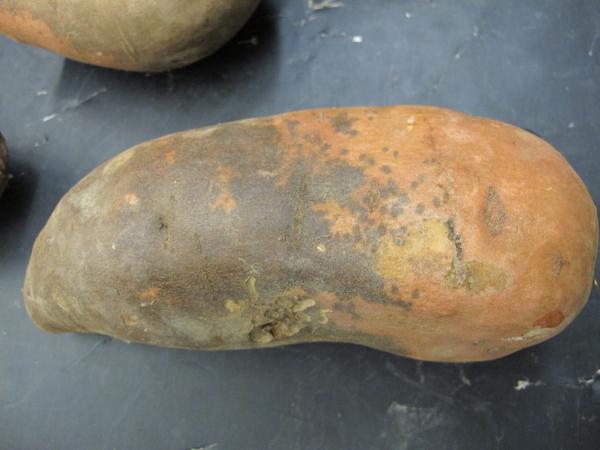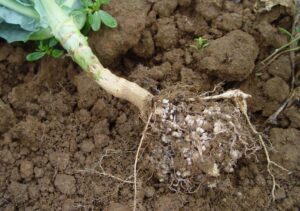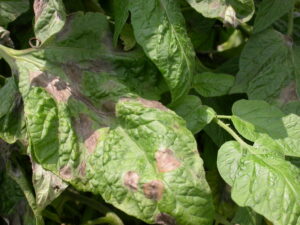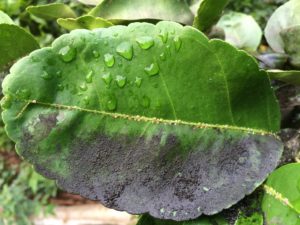Sweet potatoes, in addition to being chock full of nutrients and fiber, are a fun and easy crop to grow. Like other root vegetables, however, they can be susceptible to fungal diseases. One such disease is scurf.
In this article, you will learn what scurf is and how to identify it and distinguish it from other fungal infections. You will also learn how you can prevent it from taking over your harvest.
What is Scurf?
Scurf in sweet potatoes is caused by the fungus Monilochaetes infuscans. Other forms of scurf can affect other plants, however, this particular soil borne organism only affects sweet potatoes and other closely related plants like morning glories. The fungal disease is primarily transmitted when infected slips are planted in the soil.
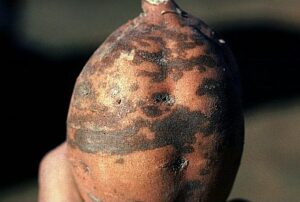
This article contains affiliate links. If you make a purchase using one of these links, I will receive a very small commission at no additional cost to you, and it will help me maintain this website. Rest assured, I only recommend products I actually like!
How to Identify Scurf
Scurf, also known as soil stain, is characterized by purple-brown to black lesions or spots that form on the surface of the potato. Plant foliage is not affected by the fungus, making the disease undetectable until harvest time. Even then, lesions may be small and go unnoticed until the infection colonizes while in storage. High humidity helps spread the fungus. If needed, you can monitor the humidity with a humidity meter.
In addition to lesions, infected potatoes may also show signs of shrinkage in storage.
How to Distinguish Between Other Diseases or Conditions
Scurf is not to be confused with sweet potato black rot, another fungal disease. The latter infects not only the skin with dark, sunken lesions, but it can also infect the flesh of the potato, as well as plant foliage. What’s more, black rot fungus produces a sweet fruity smell that scurf does not. You can learn more about black rot in this helpful article.

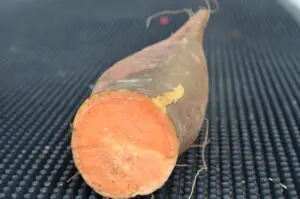
Scurf is also sometimes confused with a boron deficiency, a problem that is also seen when growing cauliflower. The lack of this trace element in sweet potatoes produces raised lesions or blisters as opposed to scurf’s flat lesions.
How to Prevent
There are no known fungicides that can treat scurf once it has become established. Thus, prevention is the best way to protect crops from damage. Here is a list of proactive measures you can take.
1. Grow your own slips from healthy sweet potatoes. This is a simple and very cost-effective process. You can learn different methods for growing healthy slips in this informative article. You can also purchase certified slips from reputable sources.
If using slips that have been grown in soil, cut the slips about one inch above the soil to minimize the risk of transmitting the soil borne fungus to new crops. You can also dip them in a fungicide prior to planting.
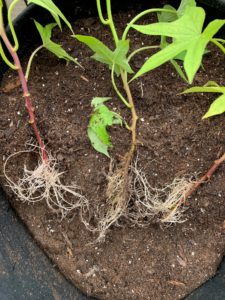
2. Go easy on rich organic matter. Scurf proliferates in soils dressed with animal manure or compost. It also appears to favor finely textured soil as opposed to sandy soil, which consists of larger particles. You can learn more about soil texture and types in this easy-to-understand article.
3. Take Care When Harvesting Scarred or bruised potatoes are more susceptible to infections, so be careful when harvesting the tubers.
4. Rotate crops. Scurf is a soil borne disease that can survive in infested soil for one to three years. Thus, it is important to refrain from planting sweet potatoes or morning glories in the same soil for consecutive years. Rather, rotate crops every three years whenever possible.
5. Sanitize or disinfect all garden tools, containers, gloves, etc. Spores are easily transmitted. Good garden hygiene should always be practiced but especially when there has been a suspected or known infection. It is truly one of the most effective ways to protect crops from diseases. You can learn more about how to implement this practice in this helpful article.
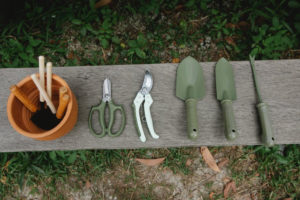
Can You Eat Sweet Potatoes with Scurf?
Scurf is a superficial discoloration of the roots, and it does not effect the eating quality of the tuber. While infected sweet potatoes may not look very appetizing, they are edible. You may prefer to remove the skin with a vegetable peeler, however, before consuming.
Thank you for reading this article! If you found it interesting or helpful, please consider sharing it with others via email and social media!
